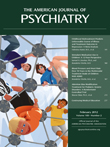In This Issue
Rise in Stimulant Use by Children
The percentage of children taking stimulants prescribed for ADHD increased from 2.4% in 1996 to 3.5% in 2008. Zuvekas and Vitiello (p. Original article: 160) based these estimates on nationally representative data from yearly government surveys of more than 6,000 households. The change in stimulant use varied by age group: adolescents had the greatest increase, and preschoolers showed a decline (figure).

Stimulant use varies not only by age but also by region, sex, and ethnic group (Zuvekas and Vitiello, p. 160)
Clinical Guidance: Abnormal Thyroid Tests in Psychiatric Illnesses
Dickerman and Barnhill (p. Original article: 127) review abnormal thyroid function test results for psychiatric patients, who are often screened routinely. Although primary thyroid abnormalities can have significant psychiatric symptoms, most of the abnormalities detected are asymptomatic, not due to endocrine disorders, and resolve with treatment of the psychiatric illness itself. These abnormal results have little clinical significance and reflect the effects of psychiatric illness on the hypothalamic-pituitary-thyroid axis. Treating asymptomatic abnormalities with thyroid replacement can be harmful.
Childhood Maltreatment and Depression
Childhood abuse, neglect, or exposure to family conflict is associated not only with persistent, recurrent depression in adulthood but also with poor response to treatment. Even combining psychological and pharmacological treatments did not improve outcome in the studies examined by Nanni et al. (p. Original article: 141) in their meta-analysis. The editorial by Simon (p. Original article: 109) asks whether the negative childhood experiences increase the risk of depression, or whether the depression increases the recall of negative experiences.
Clinical Guidance: Pulmonary Hypertension of the Newborn and Maternal Antidepressant Treatment
Occhiogrosso et al. (p. Original article: 134) review the incidence of persistent pulmonary hypertension in newborns of women treated with SSRIs. Three of six studies showed elevated risk, but all these studies failed to control fully for the possible effects of depression itself, including shorter fetal gestation periods. While persistent pulmonary hypertension is rare, about one-fourth of infants exposed to SSRIs experience a short-lived neonatal adaptation syndrome, including jitteriness, fussiness, gastrointestinal distress, feeding difficulties, and poor temperature regulation. Tachypnea and other symptoms of transient respiratory distress may present earlier. Spinelli (p. Original article: 121) concurs that the effect of depression on pregnancy outcome far exceeds the effect of antidepressant treatment. She further points out that many studies of effects associated with SSRIs fail to include confounders such as family history of illness and maternal alcoholism when claiming association with fetal abnormalities or risk for autism.
Clinical Guidance: Effects of Stimulants on Cardiovascular Function
Stimulant treatment of ADHD was associated with a 5-bpm increase in heart rate in children 7–9 years old. The effect persisted with continued treatment over the decade-long study by Vitiello et al. (CME, p. Original article: 167). There was no increase in blood pressure or cardiovascular events. Immediate-release methylphenidate was used for 85% of the children, with a mean dose of 38 mg/day in the most intensively treated group. Children with heart disease were excluded from the study. In adults, Schelleman et al. (CME, p. Original article: 178) found that methylphenidate treatment of ADHD was associated with an increase in sudden death from ventricular arrhythmia, from 1 death per 1,000 person-years to 2 deaths. The effect was more marked at lower rather than higher doses, suggesting that lower doses may have been prescribed to individuals with preexisting cardiovascular risk factors. There was no increase in strokes or myocardial infarctions. Sample limitations precluded assessment of other stimulants. This study showed no increase in sudden death among children, but an examination of unexplained sudden death in children and adolescents by Gould et al. (Am J Psychiatry Original article: 2009; 166:992–1001) found that nearly 2% of the deceased subjects were taking stimulants. In an editorial, Kratochvil (p. Original article: 112) concludes that the data on stimulant toxicity in ADHD continue to be consistent with safe use of these drugs.



